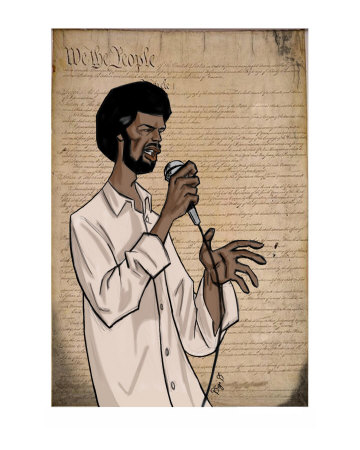This morning I woke up in a daze adjacent to my alarm clock that blurted visually and audibly the striking iridescent yellow 7:04; I rested for a second, and continued on a course of minit long naps until I stumbled out of bed to a grey light that barely broke through the shutter covering my bedroom window. I was on a mission—I reconciled myself—art history, the first test of the semester. Previous to this morning I had been up all night pondering the relevance of this subject matter—and how I was becoming extremely impatient with dead Italian painters, and much to my surprise an hour after this pain in the ass test--I had the pleasure of hearing the name Bosch in an English class. It’s strange though—I did not really have the pleasure of enjoying this artwork until I put down Yates’s forth chapter a second ago.
What I found striking about this chapter is the ability for--a memory that is well endowed with images to have a profound effect personally and externally. In the words of Ong, “think memorable thoughts”, or: INELUCTABLE MODALITY OF THE VISIBLE: AT LEAST IF NO more, thought through my eyes. Signatures of all things I am here to read, seaspawn and seawrack, the nearing tide, that rusty boot”. (But now it is time for revelation and scholarly thought which I do not seem to do in an organized fashion.) I will start with a term that Yates seems to employ quite frequently, “corporeal similitude” or physical resemblance. This she states is inherent when studying the use of images in the artificial memory. Which makes sense, because when one is contemplating memory what is easier to remember the arbitrary use of signs such as words relating meaning, or images that are solid in a memory theatre relating meaning. This is why even for literate preachers of the Middle Ages memory was viewed as an important skill. Preachers In the middle ages sought to express the emotion of scripture emotionally to a largely illiterate audience. In order for the preacher to successfully do this he would have to have a detailed image theater within him, and the ability to produce it outside of himself. Particularly in the beginning of the renaissance with the salvage of the ancient teachers, “The moral man who wished to choose the path of virtue, whilst also remembering and avoiding vice, had more to imprint on memory than in earlier simpler times”. Thus a system was developed to help remember these virtues verses vices. But what I have found striking--is the interrelation between corporeal similitude of memory, and how the art of memory helped to contribute to major paradigm shift in the artwork of the time. This is Madonna enthroned by Cimabue:
This is Madonna enthroned by Giotto, notice how the image is deeper in this work, almost as if the “illusion of depth depends on the intense care with which the images have been placed on their backgrounds, or, speaking mnemonically, on their loci …It is true that giotto’s images are regularly placed on the walls, not irregular as the classical directions advise. But the Thomist emphasis on regular order in memory had modified that rule”
As is visible through Yates’s perspective “the art of memory was a creator of imagery which must surely have flowed out into creative works of art and literature”. Which I find fascinating; what I also find fascinating is the renaissance emphasis on the grotesque and the sublime which I can see now is in large part attributed to a memory theater (which was not mentioned in art history class) and the embellishing of these singular ideas that make them memorable in the artist mind, but also in the viewers mind. I really had not thought of this much before—this however makes clear why artist used allegory and metaphors as mnemonic tools of ideas that convey explicit and non explicit meaning to the masses—which is represented in an art piece like this for example:
I am officially appreciative of art history now, and I look forward to using my own mnemonic tools for the next art history test, and making the experience memorable.
P.S For furthuring viewing check each out each of this images in the peoples encylopedia wikipedia.

Hey what Art History class are you taking?
ReplyDeleteWhen you get to French Neo-CLassical, If you do, this way of using symbols to create juxtapositions of ideas becomes really interesting with the way that it interfaces with history.
http://en.wikipedia.org/wiki/Oath_of_the_Horatii
Check it, the French were using classical imagery to evoke nationalistic pride. Through their compositions, they created an incredibly effective piece of art that touched on people's sense of story, visual literacy, and historical knowledge. If you knew how to "read" the language presented to you, the message was clear and robust. Nice to hear you have entered the crazy art world.